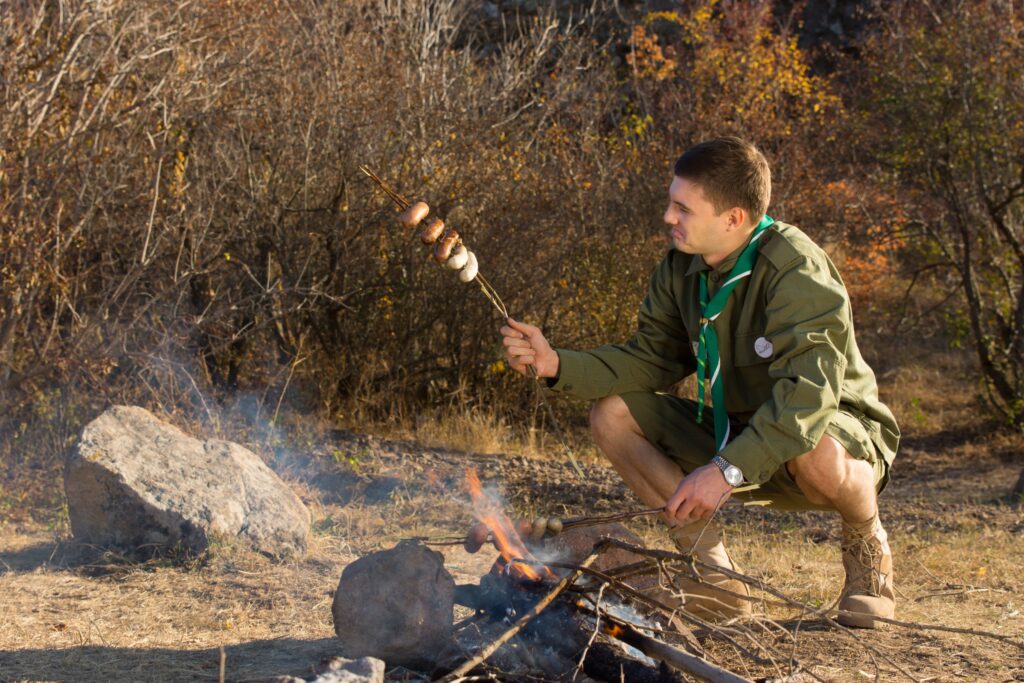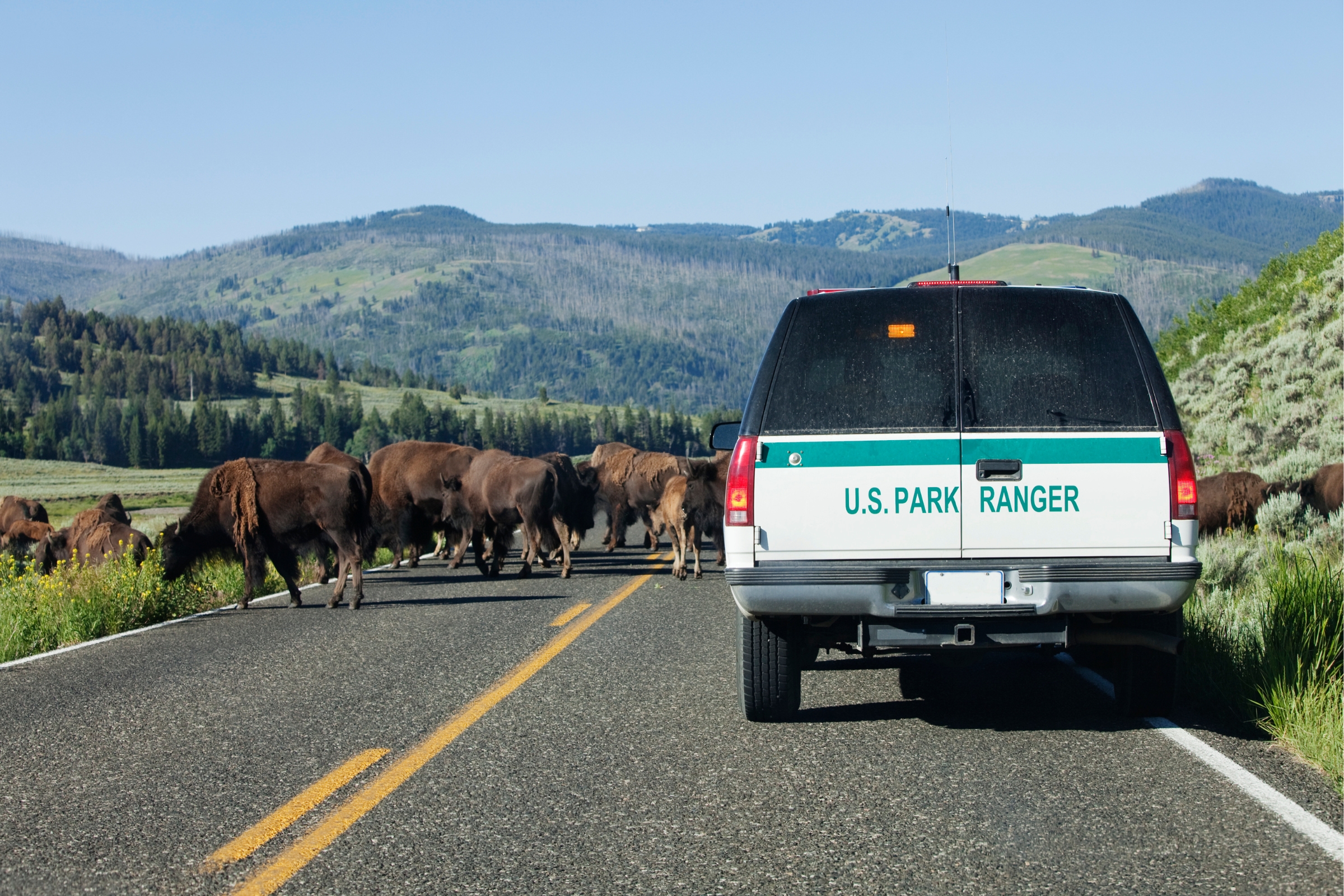Being a park ranger can be a risky job, filled with unforeseen dangers. While many envision a serene life amidst nature, a ranger’s duties often put them in harm’s way. From confronting wildlife to navigating rough terrain, the job requires constant alertness. The risks are real, and a forest ranger must be prepared for emergencies that can arise from the natural world or human threats.
Moreover, rangers patrol vast areas, sometimes alone, making quick assistance during emergencies a challenge. They are the stewards of the wilderness, tasked with protecting not only the land but also the visitors and wildlife that call it home. This responsibility, while rewarding, carries with it a weight of danger that is an inherent part of the profession.
The Unexpected Hazards of Park Ranger Duties
The life of a forest ranger is not without its unexpected perils. While they work in some of the most breathtaking environments, the job’s unpredictability can lead to dangerous situations. From sudden weather changes to hazardous terrains, rangers must be equipped to handle a variety of emergency scenarios. These hazards are a daily reality in the job, requiring both physical prowess and mental fortitude.
Wildlife Encounters and Safety Measures
Encounters with wildlife, such as mountain lions, are a significant risk for park rangers. These majestic creatures, while a thrilling sight for visitors, can pose real threats to safety. Rangers are trained in managing wildlife interactions, employing measures like carrying bear spray, making noise to avoid surprise encounters, and understanding animal behavior to prevent attacks and ensure both human and animal welfare.
Hazardous Terrain and Weather Conditions
Park rangers often traverse hazardous terrains, from steep cliffs to dense forests. Additionally, they are exposed to extreme weather conditions, including blistering heat, freezing cold, and torrential rains, which can turn a routine patrol into a survival situation. They must possess the skills to navigate these challenges safely, ensuring their well-being and that of the park’s visitors.
The Threat of Illegal Activities Within Park Boundaries
Park rangers face the real threat of illegal activities within the protected boundaries of their parks. Poaching, drug production, and vandalism are just a few of the illicit actions that rangers must combat. These activities not only harm the environment but can also lead to dangerous confrontations, requiring rangers to be vigilant and prepared for the potential of hostile encounters.

The Rigorous Training for Ensuring Safety
To mitigate the dangers they face, park rangers undergo rigorous training. This education spans a broad range of skills, from emergency medical response to fire suppression, ensuring they can handle the diverse challenges the job presents. Through this comprehensive preparation, rangers are equipped to create a safe environment for themselves and park visitors.
Mastering Survival Skills and First Aid
Rangers must master survival skills and first aid to ensure safety in the wild. Their training covers how to find shelter, navigate without GPS, and manage food and water resources. They also learn advanced first aid techniques to treat injuries ranging from minor cuts to life-threatening conditions, often becoming the difference between life and death in remote locations.
Law Enforcement Training to Handle Hostile Situations
Park rangers receive law enforcement training to manage potentially hostile situations effectively. While most visitors are peaceful families enjoying nature’s splendor, criminals sometimes seek refuge in parks to escape capture or commit crimes. In these instances, rangers coordinate with deputy sheriffs and other law enforcement agencies to uphold the law and maintain the sanctity of these protected areas.
Advanced Communication and Conflict Resolution Techniques
Effective communication and conflict resolution are critical skills for park rangers. They interact with a diverse array of individuals, from cooperative nature enthusiasts to those who may be violating park rules. Being able to de-escalate tense situations and convey regulations clearly is essential for maintaining order and ensuring everyone’s safety.
The Emotional and Physical Demands of the Job
The role of a park ranger is as emotionally taxing as it is physically demanding. Rangers must be fit to handle the rigors of patrolling and conservation work, which can include long hours on foot and carrying heavy equipment. The emotional resilience to deal with the isolation of remote postings and the pressure of emergency situations is also a crucial aspect of their job.
Managing Stress in High-Stakes Environments
Managing stress is a vital skill for park rangers, who often work in high-stakes environments. They must remain calm during wildlife encounters, search and rescue operations, and when addressing illegal activities. The ability to maintain composure not only affects their personal well-being but also has a direct impact on the successful resolution of these incidents.
The Importance of Physical Fitness and Endurance
Physical fitness and endurance are non-negotiable for park rangers, especially those working in national parks. The vast and varied landscapes require rangers to be in peak physical condition to perform tasks such as hiking long distances, climbing, or even swimming. This physical preparedness is crucial for both their safety and the effective execution of their duties.
Work-Life Balance: A Ranger’s Challenge
For park rangers, achieving work-life balance can be challenging. The job often demands irregular hours and extended stays in remote areas, which can strain personal relationships and complicate everyday life. They must navigate these demands while maintaining a commitment to their role as protectors of natural resources.
Despite these challenges, many rangers find fulfillment in their work, drawing on their passion for the outdoors and conservation. Balancing the demands of the job with personal well-being is a constant juggling act, but one that many rangers embrace as part of their dedication to the profession.
Public Interaction: The Good, the Bad, and the Ugly
Public interaction is a significant part of a park ranger’s role, encompassing both rewarding and challenging experiences. Rangers serve as the face of the park service, providing assistance and education to visitors. However, they also deal with rule breakers and individuals who do not respect the natural environment or the regulations put in place to protect it.
This aspect of the job requires rangers to be adept in customer service and conflict management, often needing to enforce rules while still providing a positive experience for the majority of visitors who come to enjoy the parks responsibly.
Heartwarming Moments with Park Visitors
Rangers often experience heartwarming moments with park visitors, such as witnessing the joy of a child seeing wildlife for the first time or assisting a hiker in reaching a personal milestone. These interactions underscore the importance of their role in facilitating memorable experiences and fostering an appreciation for nature.
Whether it’s through educational programs or casual conversations on the trails, rangers have the opportunity to make a lasting positive impact on visitors’ perceptions of the natural world, furthering the mission of conservation and stewardship.
Dealing with Unruly or Disrespectful Behavior
As a park ranger, you’ll meet all sorts of folks enjoying the great outdoors. But sometimes, visitors forget their manners at home. You might have to deal with loud music in quiet zones, littering, or folks wandering off trails, harming the park’s natural beauty. It’s your tough job to step in, using your best conflict resolution skills to keep the peace and protect the park. It’s not always easy, but someone’s got to do it, right?
Then there are those who just don’t play by the rules, sneaking into closed areas or getting too close to wildlife. It’s dangerous for them and the animals. In these cases, you’ve got to be firm but fair, explaining why rules matter, all while keeping your cool. It’s part of keeping visitors and the park safe, even if it means being the bad guy sometimes.
Educational Outreach and Community Engagement Efforts
Being a park ranger isn’t just about patrolling trails. It’s also about reaching out and teaching folks about why nature rocks. You get to organize fun events like guided hikes and wildlife talks, showing kids and adults how cool and important our national parks are. It’s all about building a community that loves and takes care of the great outdoors together.

The Pursuit of a Park Ranger Career
So, you want to be a park ranger? Get ready for a challenge, my friend. Jobs in the park service are super competitive. You’ve got to have a passion for nature, a strong work ethic, and the smarts to handle everything from first aid to law enforcement. It’s about more than just loving the outdoors; it’s about having the skills to protect it.
And don’t forget, you need to be in good shape too. Rangers do a lot of hiking, climbing, and sometimes even horseback riding. You’ve got to be ready for anything, from rescuing lost hikers to stopping poachers. If you’re up for the challenge, and ready to commit to conservation, then buckle up. It’s a wild ride, but totally worth it!
Navigating the Competitive Nature of Park Service Jobs
Landing a job with the park service is tough. You’re competing with lots of folks who all dream of protecting places like Yosemite and the Grand Canyon. National monuments need rangers who are skilled in all sorts of things, from firefighting to educating the public. So, you’ve got to shine with your skills and passion for the parks to get your foot in the door.
Long-term Commitment and Passion for Conservation
Being a park ranger isn’t just a job; it’s a calling. You’ve got to be in it for the long haul. Our national parks need folks who are ready to dedicate their lives to protecting these treasures. It’s not just about the animals and plants, but also about preserving these places for future generations to enjoy. It takes a special kind of commitment, but the rewards are as big as the great outdoors.
It’s a career that’s all about love for the land. You’ll witness some of the most beautiful sunrises and sunsets, and you’ll know you’re playing a part in keeping them that way. That’s why rangers stick around – because their passion for conservation is as vast as the parks themselves.
The Rewards: Beyond the Paycheck
Okay, so being a park ranger isn’t going to make you rich. But the rewards? They’re huge! You get to work in some of the most stunning places on Earth, where every day is different. You might help a lost hiker find their way, or see an eagle soar – stuff that’s way cooler than a regular desk job.
Plus, you’re making a difference, keeping the parks safe for the animals and the people who love them. And let’s not forget about the perks, like getting up close with nature every day and being part of a community that cares just as much about the environment as you do. That’s worth more than any paycheck.
The Reality Behind the Park Ranger Persona
Some folks think being a park ranger is all about chilling in the woods, maybe taking care of a few trails. But it’s so much more. Rangers are law enforcement officers, teachers, first responders, and conservationists all rolled into one. You’re out there in the heat, the cold, and everything in between, making sure everyone and everything in the park is A-okay.
And it’s not all majestic animals and breathtaking views. There’s a ton of behind-the-scenes work, too. Paperwork, permits, managing resources – it’s all in a day’s work. You’ve got to be ready for anything, from medical emergencies to wildfires. It’s a big job, but hey, someone’s got to do it, right?
Countering Misconceptions: More Than Just a “Ranger Rick”
Let’s get one thing straight: being a park ranger is more than just wearing a cool hat. You’re out there protecting national parks, helping visitors to the park have a good time without wrecking the place. You’ve got health insurance and other health benefits because, let’s be real, the job can be tough. But you also get to conduct educational programs and tackle a variety of tasks every day. It’s a job with purpose, and that’s something to be proud of.
The Unspoken Challenges of the Profession
Being a ranger isn’t always a walk in the park. You’ve got tough stuff to handle, like park law enforcement and emergencies. The job can be stressful, and that’s why you’ve got health insurance – to keep you in tip-top shape for the challenges. And believe it or not, rangers sometimes have to deal with more than 20 different tasks a day. It’s all part of the gig.
The Unique Nature of Non-National Park Service Rangers
Not all rangers work for the big parks. Some look after state parks, historic sites, or national monuments. These rangers are skilled in all sorts of areas and often educate the public about the special places they protect. Their jobs might be a little different, but their mission’s the same: to keep these places safe and share their awesomeness with everyone.
Is Being a Park Ranger Dangerous?
Being a ranger is no joke. You might face dangerous situations, like wildlife that’s too close for comfort or rescues on rough terrain. It’s not like you can have arguments with bears or tell the weather to chill out. Rangers are federal law enforcement, so you’ve got to be tough. But you also need a big heart, because at the end of the day, you’re there to protect the park and its visitors. It’s a job that asks a lot, but gives back even more.





